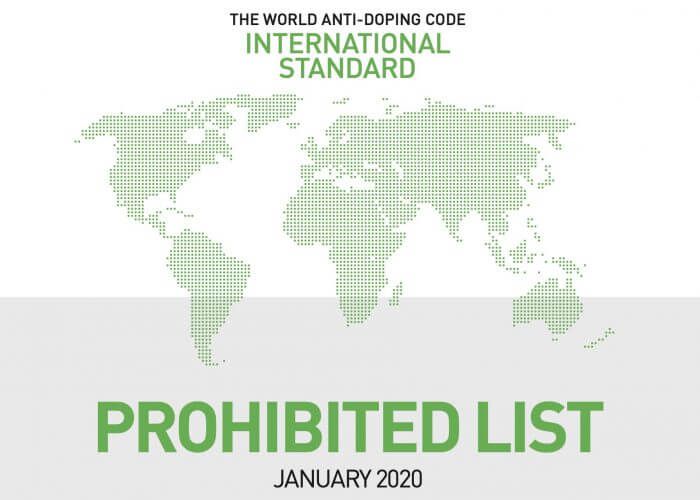Roland Schoeman Violation ‘Unintentional’: Doping Judges Praise ‘Costly Search’ For Truth

Editorial content for the 2021 Tokyo Olympic Games coverage is sponsored by GMX7.
See full event coverage. Follow GMX7 on Instagram at @GMX7training #gmx7

Roland Schoeman, the US-based South African sprinter who has five more weeks of a 12-month anti-doping suspension to serve, spent $16,000 in an attempt to discover the source of a low level of the banned substance GW501516 that showed up in a May 2019 control.
Now 39, Schoeman’s “honest, integrity and due diligence”, his Ayuverdic approach to supplementation and research into GW501516 by a team including Russian whistleblower Gregory Rodchenkov that showed how the banned substance was detectable for only short periods of time are cited among reasons why a FINA Doping Panel concluded that the athlete had not intended to take the substance nor deliberately tried to enhance his athletic performance.
FINA, the international federation, published the suspension on February 5th but has yet to publish the Panel’s report in full. Swimming World can now reveal why judges did not throw the book at Schoeman, who fell foul of the WADA Code for the first time in his career at 39, most likely as a result of a regime of supplementation.
The Panel, of Robert Fox, the Swiss Chair, Peter Kerr, of Australia, and William Bock III, of the United States, also concluded that the substance was present and, as such, Schoeman had fallen foul of the WADA Code. The 12-month suspension for an offence that can attract a penalty of more than two years reflected the legal facts of the case as well as the opinion of the judges that the rule violation was unintentional and that Schoeman had shown “honesty, integrity … and due diligence … in a relentless and costly search for the truth”.
The 12-month suspension meant that Schoeman missed the qualification window for the Tokyo 2020 Olympic Games he’d made his target 16 years after he claimed a medal of each colour at the Athens 2004 Games: gold with South African 4x100m freestyle teammates, silver in the 100m freestyle behind Dutchman Pieter van den Hoogenband and bronze in the 50m freestyle won by defending champion Gary Hall Jnr, of the United States.
Schoeman turns 40 in July and now has a chance to race as a 41-year-old at the Tokyo 2020 Games to be held in 2021 after postponement of the Olympics due to the coronavirus (COVID-19) pandemic.
In the Doping Panel’s report seen by Swimming World, the judges conclude:
“FINA has not sought to prove that the Athlete’s anti-doping rule violation was intentional, there is no evidence that his rule violation was intentional, and under the unique circumstances in this case the Athlete was able to establish as required by FINA DC 10.2.1.1 that his anti-doping rule violation was not intentional. In this regard, there was strong evidence of the Athlete’s honesty and integrity and of his diligence in seeking to comply with the anti-doping rules and of his relentless and costly search for the cause of his positive test and this evidence was supported by testing evidence (explained further below) which supported the conclusion that his ingestion of the prohibited substance was not intended to enhance performance or to allow him to “cheat” and this evidence was coupled with evidence of a significant impediment, not of the athlete’s own making, which prevented him from testing the precise batches of products used by the Athlete at the time of his positive test; therefore, the FINA DP finds that his rule violation was not intentional and he could not be subject to more than two years ineligibility pursuant to FINA DC 10.2.2.”
Schoeman was represented in the case by Howard Jacobs, the lawyer renowned for taking on the defence of athletes in doping cases.
An out-of-competition test conducted by the lnternational Testing Agency (lTA) on behalf of FINA on 18 May 2019 in Tempe (USA), showed the presence of the substance GW501516 (Class S4.5. Hormone and Metabolic Modulators) (more commonly known as GW1516).
The significant parts of the Doping Panel report in relation to the banned substance are these:
- GW1516 is also not particularly difficult to detect in urine samples, and is detectable in a urine sample for 40 days after a single oral dose of 15 mg.
- Despite the fact that GW1516 was not found in any of the supplements tested by the athlete, there is evidence that it has been found in other nutritional supplements which did not disclose it on the label.
- There were low levels of GW1516 found in Mr. Schoeman’s urinalysis (1.3 ng/mL)
- The athlete had never tested positive for GW1516 or any other banned substance in his athletic career prior to his positive test on 18 May 2019. In addition, his test 52 days prior to the positive test (on 27 March 2019) was negative and his test 32 days after the positive test (on 19 June 2019) was likewise negative.
- The fact that the two tests in March and June were negative is inconsistent with regular, intentional use of the substance, but consistent with possible contamination. The athlete provided in his exhibits a research article of a study written by Tim Sobolevsky, Marina Duikunets, Irina Sukhanova, Edward Virus and Grigory Rodchenkov, according to which “For comparative purposes, GW1516 excretion study was also performed. It has been shown that GW1516 and GW0742 are best monitored as the sulfone metabolites which are detectable in urine using LC‐MS/MS based procedure up to 40 and 20 days after a single oral dose of 15 mg each respectively. The unmetabolized compounds are measurable only for a short period of time and at low ng/ml level. The sulfoxide‐to‐sulfone ratio for both GW1516 and GW0742 changed irregularly in the range of 1:3 to 1:15 depending on time elapsed after administration with a tendency of increasing the ratio with time. The other important finding was that the abundance of GW0742 and its metabolites in urine is about ten times lower than in case of GW1516.”
The delay in notice being given to Schoeman of his positive test contributed to the panel’s judgement in favour of leniency in the length of suspension imposed. The Panel noted:
- 6.2.4 Regrettably, notice to the Athlete of his positive test was delayed through no fault of the Athlete for nearly two months after sample collection and until 10 July 2019.
- 6.2.5 Neither FINA nor the WADA accredited laboratory provided any explanation for this delay.
- 6.2.6 Significantly, a more prompt notification to the Athlete could have benefited the Athlete in identifying the source of his positive test and the delay in notification certainly prejudiced the Athlete by making it less likely that he could find the source. For instance, because of the delay in notification the Athlete could not test the precise batches of the supplements he was using at the time of his positive test.
Supplements
When Schoeman was tested on May 18, 2019, his declaration included a note of what he had consumed, in terms of supplements, in the previous 7 days, namely “Ambien (5mg), Zinc (500mg), Triphala Ayurvedic Medicine (1/2tspn), Ghee (1/2tspn), Creatine (5mg), HMD (600mg), L-Glutamine (6g), Co-Q10 (3g), Beta Alanine (3g)“.
The Doping Panel notes: “Despite the fact that GW1516 was not found in any of the supplements tested by the athlete, there is evidence that it has been found in other nutritional supplements which did not disclose it on the label.”
It also concluded the following:
- The athlete carefully scrutinized the supplements he consumed, none of which could be reasonably characterized as “risky supplements”. Indeed, while he had used a great number of supplements most were supplements which contained only a single ingredient such as a mineral and most did not contain a mixture of ingredients, which the athlete felt was a riskier supplement. He considered supplements containing only a single mineral as more akin to a vitamin and less risky.
- The athlete exercised extreme diligence in his choice of supplements, in that he never used bodybuilding supplements, nor any which would have appeared to be risky or contain known “USADA Supplement 411” flags. He cross-referenced all ingredients on the website www.globaldro.com.
- Also, many of the supplements the athlete was using were Ayurvedic products which the athlete understood to be natural herbs.
- The athlete had Mr. Paul Scott testify. Mr. Scott is laboratory director of Korva Labs, to whom the athlete sent supplements to be tested. Mr. Scott testified that the detection window of GW1516 was approximately 40 days. Had the athlete used a 15-20 mg oral dose of the substance, in this case, it would likely have had to have been limited to use within a week after his negative test in March, then discontinued, which would be inconsistent with a regular, intentional use of the substance. This is because intentional use would imply ingesting the substance over a cycle of 4 to 8 weeks. Hence the hypothesis of a regular, intentional use of the substance in his opinion was highly unlikely.
More on the Panel’s report later.

WADA 2020 Prohibited Substances and Methods – Photo Courtesy: WADA
Background on the Substance GW501516 (GW1516).
In 2007, research showed that high doses of GW501516 given to mice dramatically improved their physical performance. The resulting publicity led to a black market for the drug candidate and to its abuse by athletes as a doping agent.
The World Anti-Doping Agency (WADA) developed a test for GW501516 and other related chemicals and added them to the prohibited list in 2009.
Concerns were raised prior to the 2008 Beijing Olympics that GW501516 could be used by athletes as an ergogenic performance-enhancing drug that was not currently controlled by regulations or detected by standard tests. One of the main researchers from the study on enhanced endurance consequently developed a urine test to detect the drug, and made it available to the International Olympic Committee (IOC).
GW501516 has been promoted on bodybuilding and athletics websites. In 2011, it was reported to cost $1,000 for 10g.
WADA developments on the substance include:
- In 2012, GW501516 recategorised from a gene doping compound to a “hormone and metabolic modulator”.
- In 2013, warning issued of the possible health risks, WADA stating that “clinical approval has not, and will not be given for this substance”. The New Scientist attributed the warning to the risks of the drug causing cancer.
Positive Tests
A number of athletes have tested positive for GW501516.
- At the Vuelta Ciclista a Costa Rica in December 2012, four Costa Rican riders tested positive for GW501516. Three of them received two-year suspensions, while the fourth received 12 years as it was his second doping violation.
- In April 2013, Russian cyclist Valery Kaykov was suspended by cycling’s governing body UCI after having tested positive for GW501516. Kaykov’s team RusVelo dismissed him immediately.
- In May 2013, Venezuelan Miguel Ubeto was provisionally suspended by the Lampre team.
- In February 2014, Russian race walker Elena Lashmanova tested positive for GW501516.
- In April 2019, heavyweight boxer Jarrell Miller tested positive for GW501516, which caused his challenge for Anthony Joshua’s World Heavyweight titles to be cancelled.





Fernando Delgado Sellas
Carlos Lomba muchas gracias
Roland- im glad this has cleared your name! Time for Roland to get ready for the next Olympics. Best of Luck to you for the Tokyo 2021 Olympic Games.